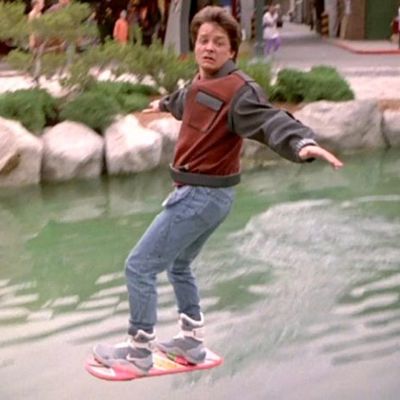
This post originally ran in December 2014. We are rerunning it because it’s finally October 21, 2015.
This fall not only marked the one-year countdown to October 21, 2015, the date on which Back to the Future II’s Marty and Doc arrive in the future, but it saw the announcement of the Hendo Hoverboard. Despite some obvious limitations (it only hovers over one particular surface), the gadget brings us a little closer to the 2015 imagined by the 25-year-old sequel. It’s not the only thing, either. Lockheed Martin says it’s close to building a small nuclear-fusion reactor. Lockheed’s proposed reactor won’t be as small as Mr. Fusion, which powered the DeLorean with banana peels and beer cans, but it’s yet another step toward making our future like Marty McFly’s.
But what about the rest of the wild technology found in 2015 Hill Valley? We spoke to a handful of scientists, professors, tech whizzes, and other experts about the possibilities of this movie future.
Flying Cars?
When Doc, Marty, and Jennifer first arrive in 2015, the airborne DeLorean is cruising through the sky on a literal highway. According to Thomas Frey, executive director of futurist think tank the DaVinci Institute, we shouldn’t expect to see either of those things, ever. “We will never get to the flying car era,” Frey told Vulture. “We will get to the era where we get flying drones that haul people, though.” The BTTF II model, in which a person gets behind the wheel of his own flying car, is too dangerous, Frey says. “Once we get into three-dimensional space, flying vehicles are exponentially more complicated, and the average person is not prepared to do that.” As for the highway in the sky, Frey envisions a much more sophisticated solution to controlling air traffic. “Directional layers of airspace,” he says, where specific altitudes have a designated direction in which vehicles fly.
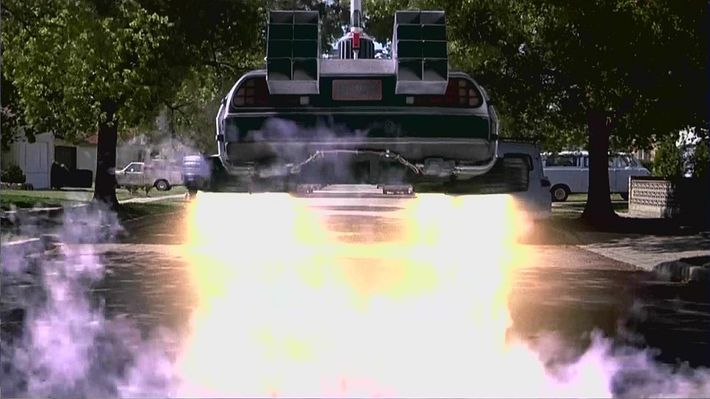
Not to Mention the Weight
Don’t believe Goldie Wilson III, grandson of former Hill Valley mayor Goldie Wilson, who charges “only $39,999.95” to convert an “old road car into a skyway flyer.” Frey says, “Traditional cars are way too heavy. They’re constructed all wrong for something like that.”
Robot Gas Stations
By 2015, Hill Valley’s local Texaco has lost its attendants, replacing them with a robotic arm that fills the tanks of flying cars. The Dutch have invented a robotic pump, and though these are a long way from ubiquity, Frey does think we might see more of them in the next five years. More likely, though, he says, is a variation on the full-service gas station but for electric cars. “Being able to drive over a platform with an electric car, and charge your battery and never have to get out, is entirely possible right now,” he says.
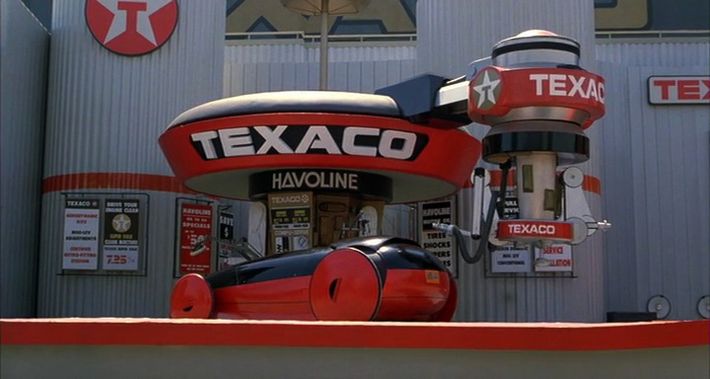
Neon Curbs
It’s easy to imagine why neon curbs would be common in 2015 Hill Valley, given the need to land a car from above, but don’t expect to see them in real life. In fact, all public-safety lighting may one day be replaced by jellyfish genes, Frey says. “We’re able to embed them in trees and plants, and there’s some interesting speculation that a lot of night lighting is going to go away and we’ll have our plants and trees glowing in the evening.”
Thumbprint I.D.s
In BTTF II’s version of 2015, thumbprints are the preferred mode of identification. We first see a futuristic thumb-pad in action when Hill Valley Police use one to identify Jennifer, whom they find sleeping in an alley. Once at the McFly residence, we see another thumb pad, in the place of a doorknob. They pop up again as a way to make mobile payments. None of that seems very far-fetched today. The real question when it comes to thumbprints isn’t about the technology itself, but if it’s “the most efficient, reliant way of accelerating and expediting transactions,” says Shawn DuBravac, head of research at the Consumer Electronic Alliance. What seems more likely is less of a reliance on actual thumbprints and more of one on our smartphones, which DuBravac says “will become an extension of your thumbprint.” That sounds better anyway. If your front door and phone communicate with each other, the door can open while you’re walking toward it, rather than requiring you to press your thumb to a pad. That’s a few more precious seconds to ride your …
Hoverboard
We’re talking about a real hoverboard here, not Hendo’s hoverboard, which requires a specialized surface to hover. In BTTF II, the hoverboard Marty borrows from a young girl works on any surface except water. How far away is that? Frey is firmly noncommittal. “Ten years, 20 years, who knows?” he says. He’s not so quick to discount Hendo’s innovation, though, saying, “It’s an interesting breakthrough in thinking that dramatically brings a BTTF II–type device much closer.”
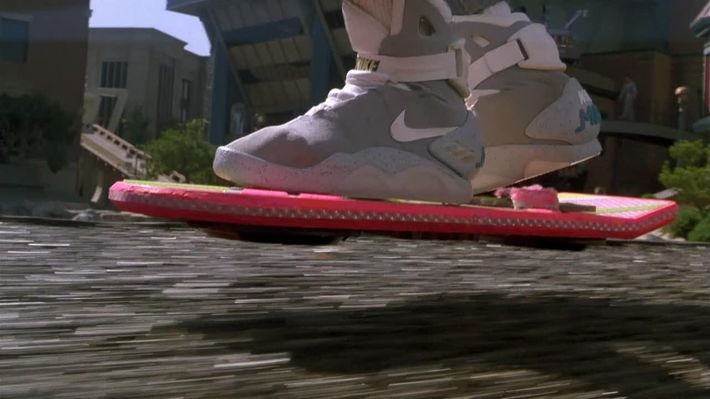
Dehydrated Pizza
Here’s the bad news. You or your progeny will, in all likelihood, never say, “Boy, oh boy, Mom, you sure know how to hydrate a pizza.” But, “Boy, oh boy, Mom, you sure know how to PRINT a pizza” is a total possibility. “In the future, maybe consumers will go down to the store, pick up a tube of A, B, and C molecules, type ‘filet mignon’ [into their 3-D printers], and they’ll have filet mignon,” says Roger Clemens, a food scientist at USC and spokesman for the Institute of Food Technologists. Early versions of this technology are currently in the works. In fact, a pizza printer exists, though the product doesn’t look delicious, or even edible. Still, the dream of “pizza from a tube of nothing,” as Clemens calls it, is alive.
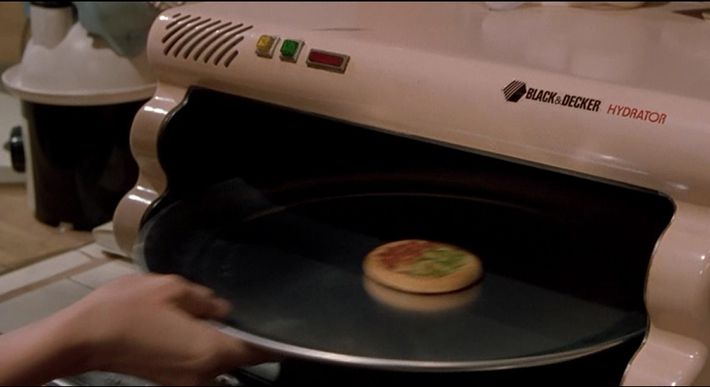
Abolition of the Justice System
In 2015, Doc tells Marty, lawyers are abolished and the criminal justice moves at the speed of light. That’s how Marty Jr. is tried, convicted, and sentenced within two hours of his arrest. We asked Dr. Chris Smith from Michigan State’s School of Criminal Justice what it would take to achieve a justice system capable of moving so quickly. Assuming we’re not talking about a “kangaroo court,” Smith says, that kind of justice system would require a society in which “surveillance is so pervasive, intrusive, and thorough that every action (and thought?) could be monitored and recorded.” The technology to achieve that type of surveillance, at least as it relates to actions, exists today, but let’s hope it’s never deployed. Not because we should fear the technology itself, Smith says, but because of the people behind it. “We would always need to worry about the manipulation of criminal evidence and control of prosecutions by those flawed human beings who are controlling the technology.”
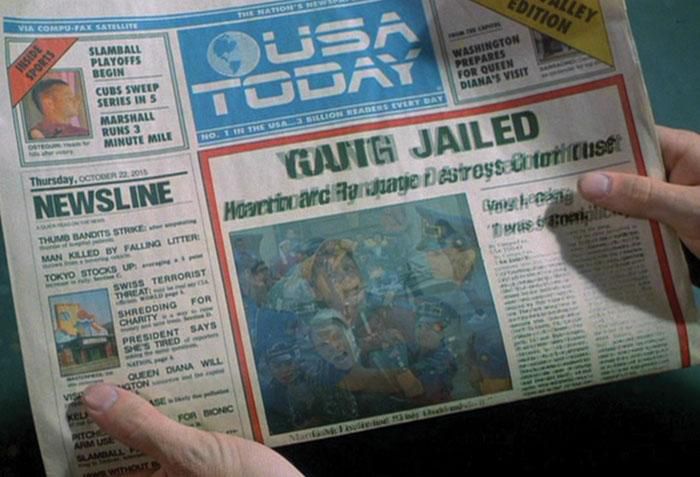
Sleep-inducing Alpha Rhythm Generator
All it takes is a quick flash from Doc’s handheld device made by EZ Sleep, and Jennifer is out cold. A product like this in the wrong hands would be trouble. So it’s a good thing they don’t exist, says Chris Winter of Charlottesville Neurology and Sleep Medicine. “The idea that we can induce a radical change in at least an unhealthy brain with a series of light flashes is not completely out there,” he says. Nor is the idea that people would really want something like this. “The demand for it would be incredible. People are definitely looking for that device or that pill that makes sleep automatic. I would imagine the abuse potential of sexual assault or just screwing around would pretty troublesome, though.”
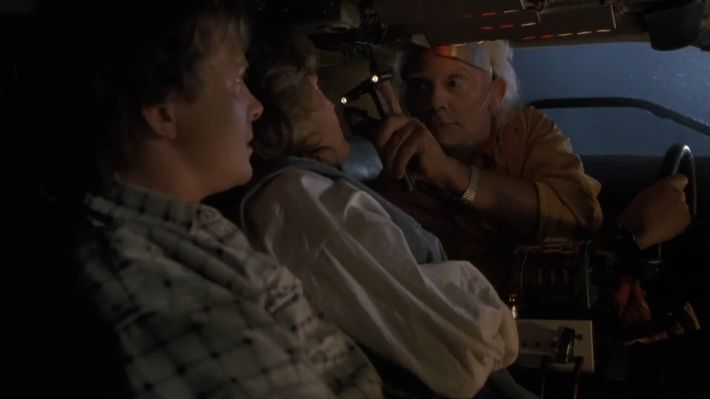
Power-Lacing Shoes and Auto-Fitting, Auto-Drying Jacket
The shoes are coming! Back in February, a Nike designer said the company will release shoes with power laces by 2015. The big unknown is if those power laces will be a part of the Nike Mag, the shoe released sans power laces in 2011 that looked just like Marty McFly’s shoes in BTTF II. The auto-fitting, auto-drying jacket will take a bit longer. “You would probably need some type of mechanical component to it,” DuBravac said skeptically. As for auto-drying, he says, “you could almost argue that with the invention of Gore-Tex, we already have it.”
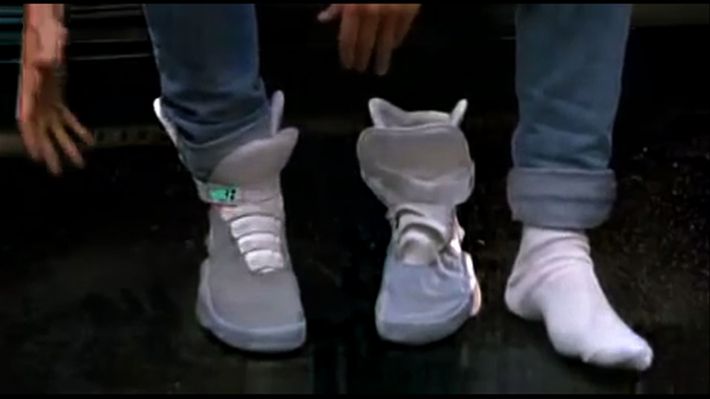
Bionic Implants and Rejuvenation Clinics
Technological advancements in BTTF II’s version of 2015 aren’t limited to consumer electronics and transportation. There are a few goodies for those hoping to live forever, too. Bionic implants are apparently elective enough that teenage Griff Tannen has them, and Doc mentions a trip to a rejuvenation clinic that, among other things, added 30 to 40 years to his life. Frey, who has written extensively on the future of biotech, says 3-D printing presents an alternative to rejuvenating our failing bodies or augmenting them with mechanical implants. “There’s all this work being done on 3-D printing body parts. How long until we can 3-D-print an entire replacement body for ourselves?” he asks.
Hovering Inversion Therapy
When septuagenarian George McFly throws out his back in 2015, he’s forced into his hovering inversion therapy unit. Don’t expect to ever see one of those, Frey says. “By the time we get to inventing that device, we’ll have the ability to cure the problem before we need that kind of thing.”
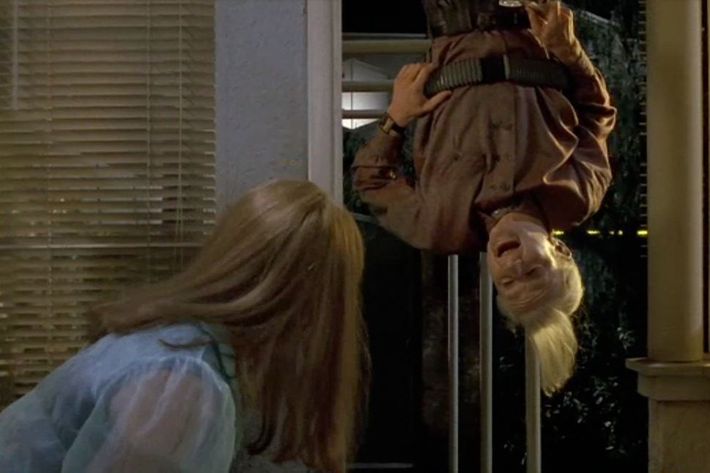
Holographic Movies
For what ultimately amounted to quick sight-gag, BTTF II’s Jaws 19 in Holomax joke was a layered one. Prophetic, too. Not only did it foresee Hollywood’s franchise and 3-D obsessions, but also Max Spielberg’s career in the movies (he hasn’t directed anything, but he does have an IMDb page). Jaws 19 is clearly not happening by 2015, or any time after that, but what about holographic films that allow monsters to pop out of the screen and try to grab you? Before answering that, Craig Newswanger, CTO of Zebra Imaging in Austin, wants you to know that that’s not how holographic movies would work. “It would be like watching a play on a stage,” Newswanger says of true three-dimensional display. “We would not have the experience of having 3-D objects in our lap.” As we wait for that technology, though, Newswanger says “light field displays and possibly augmented reality” will be able to give people the advancements in movie-watching that they’re looking for.
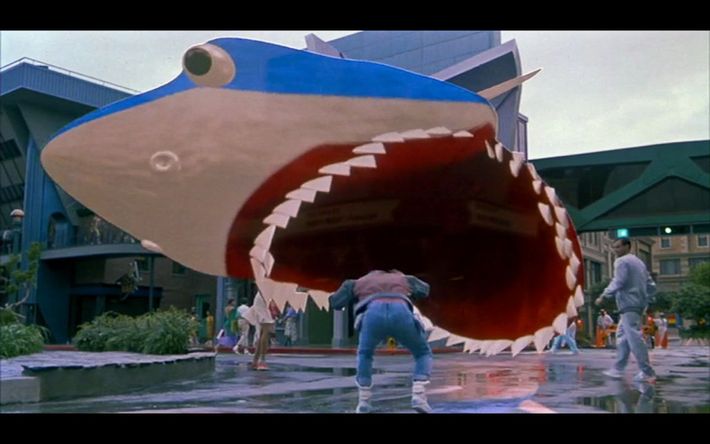
Cubs Sweeping the World Series in 5 games
If we would have done this piece a few years ago, BTTF II’s joke about the Cubs finally winning the World Series would be just that — a joke. But now, well, it’s a slightly less funny joke. Flush with young talent, the Cubs should start competing for a playoff spot sooner rather than later. “I can actually imagine a scenario in which the Cubs become serious wild-card contenders,” says ESPN baseball analyst Dan Szymborski. His very early, very rough odds for a Cubs World Series currently sit at 95-1, but a lot can change between now and Opening Day 2015. As for the World Series becoming a best-of-nine series, which would be necessary for a five-game sweep, Szymborski says, “there are probably better odds of me starting Game 1 of next year’s World Series.”
Dog-Walking Drone
A floating dog collar connected to your dog’s collar won’t likely be available at Petsmart any time soon, but a small drone that can take your pooch around the block? It can be done today. As for normalizing it? “Drone shows up, it’s got the path for your dog, and it can walk your dog,” DuBravac says. “I think that makes all the sense in the world.”

